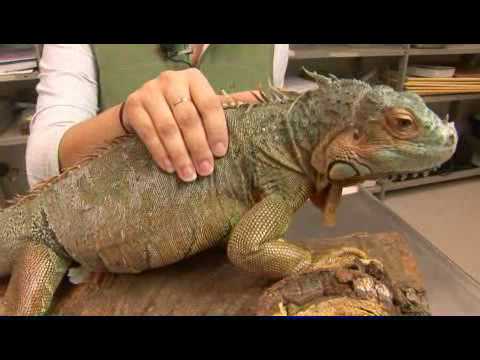Most iguanas can be seen in the tropical and subtropical forests, in the deserts and along seashores. Places like Canada, Galapagos Island, South and Central America, Caribbean Islands, Madagascar, Fiji in the South Pacific and off the east coast of Africa you will find the different kinds of Iguanas.
Iguanas are the most popular and the largest of the lizard family. Like the other common reptiles, they are also egg-laying and cold-blooded animal that has an ability to adapt to their environment.
Different species of Iguanas greatly differs on its behavior, color, size and their status as endangered in the wild. Common species like the red iguana and green iguana are still in great numbers but species like Fiji Island iguana and Brachylophus vitiensis are becoming endangered.
Different kinds of Iguanas are difficult to recognize as members of the same family. They act and look differently. Some iguanas have colors that are bright and vivid and others are dull. Each species of Iguanas has its own adaptation because it can be found in a variety of habitats.
Iguana as pets
In America, iguanas are kept as pets. Americans believe that by taking care of the iguana, they can save these iguanas from being extinct. Moreover, they are aware of the proper handling of iguanas, like the habitat, feeding habits and other things relevant to their existence.
Iguanas are typically herbivores, eating flower buds, young leaves and fruits. Some also eat the rare juicy mealworm, wax worm and cricket. In some places in America, iguanas are fed by different kinds or dark leafy greens and different fruits.

Species of iguanas grows quickly. They can be five times longer and a hundred times heavier as an adult than its size from hatchling, in just for twenty-four months.
That is why it is vital for your iguana to be given proper food and diet, living area and a proper range of temperature. Iguanas that are kept in a small place without any proper food and diet and no sun exposure would probably grow at a slower rate. The bones would also become weak and easily expose to metabolic bone disease and serious fracture.
How will you know if the Iguana is a male or a female?
Male Iguanas usually have large fat pockets on the back of head. They tend to have large or heavy jowls and have lager femoral pores or plugs on the underside of their thigh. Also males usually have larger blockier heads than females. On the other hand, female iguanas don’t have large fat pockets on their head. The latter also do not tend to have large or heavy jowls. They have very small femoral pores and plugs and usually have smaller heads.
Male iguanas are also involved in courtship behaviors of erecting it spines at the back and head bobbing. During courtship male iguanas are quite aggressive but usually they are quite timid and will flee if approached.
In addition, most female iguanas dig a burrow in a sunny area, lay eggs and cover them and it leave the eggs alone. The warm temperature makes the eggs incubate. Usually all eggs in the nest hatch at the same time. On the other side, iguanas face many dangers from loss of habitat to the prey on iguanas and humans eat them. Several measures can help iguana survive such as education programs for people living in iguana habitats, captive propagation in zoos and restriction on hunting.
